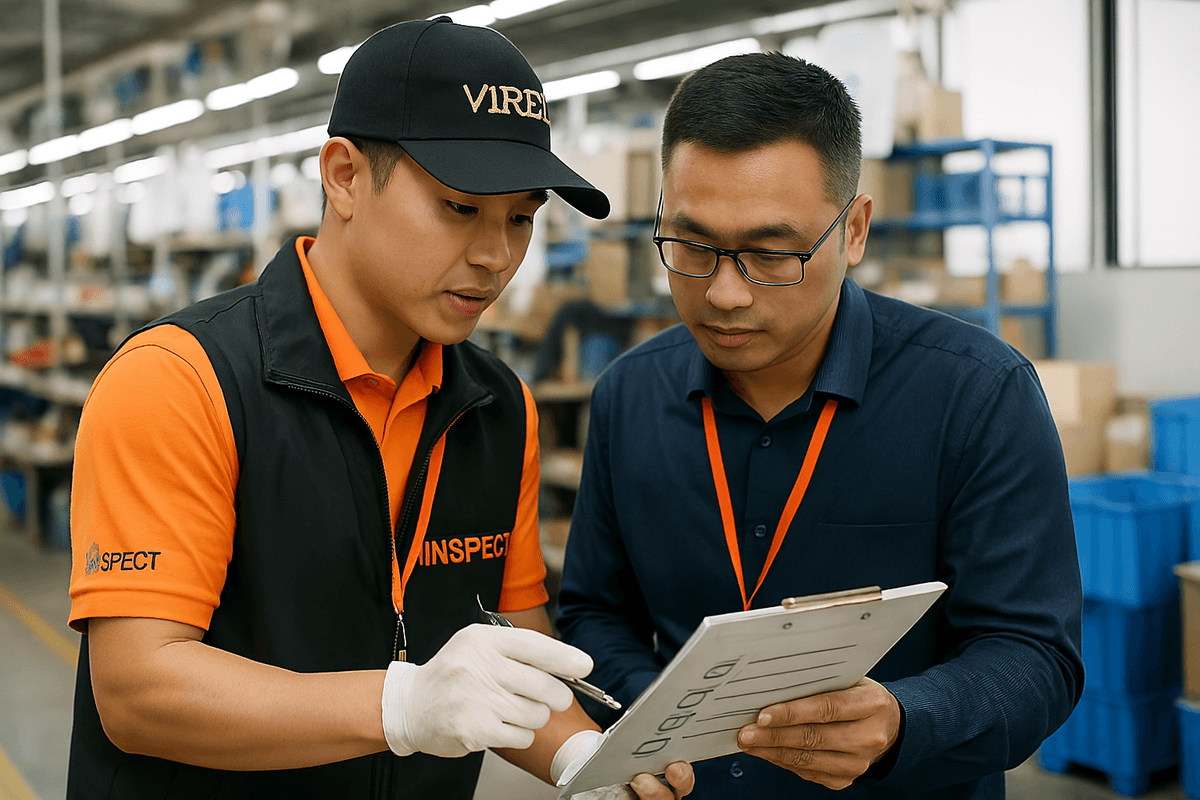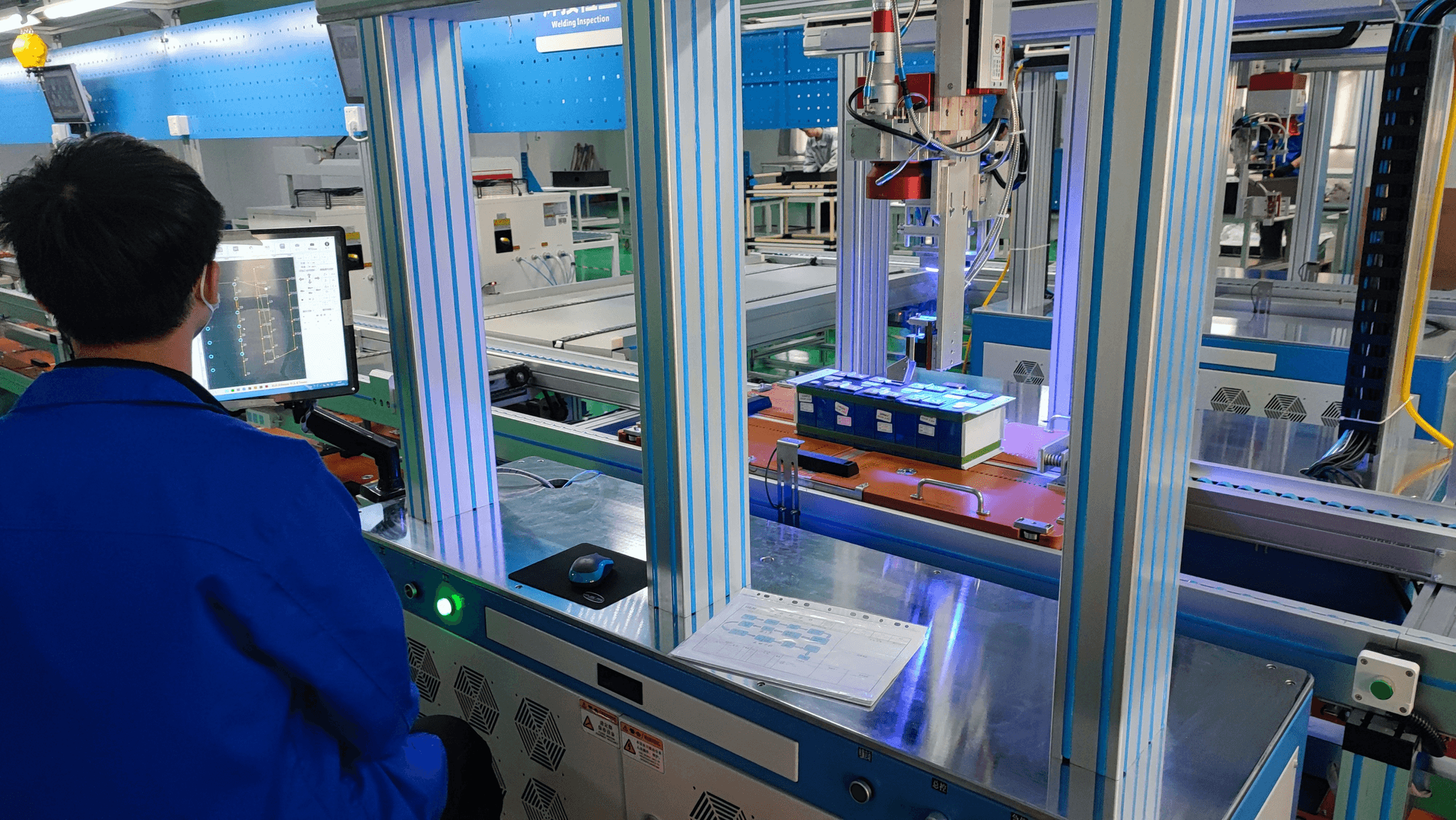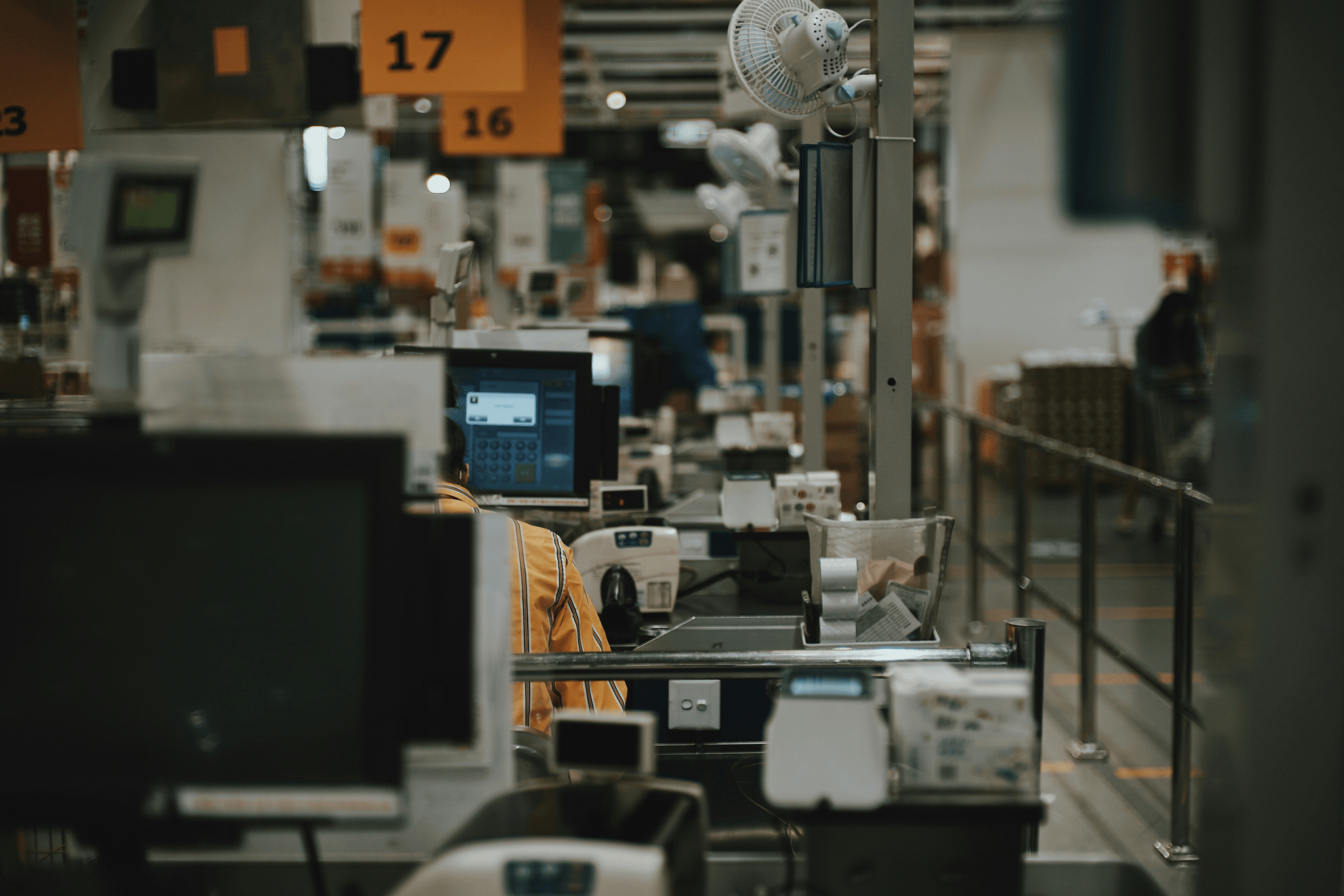Introduction

In the ever-evolving landscape of manufacturing, understanding Umbrella Quality Control Standards is not just a luxury—it's a necessity. These standards serve as the backbone of reliable quality control, ensuring that products not only meet but exceed customer expectations. With globalization and heightened competition, effective quality control has become paramount for any business aiming to thrive in today's market.
Understanding Umbrella Quality Control Standards
Umbrella Quality Control Standards encompass a wide range of procedures and protocols designed to maintain product excellence from inception to delivery. They provide a structured approach to identifying defects and implementing corrective measures throughout the production process. By establishing these standards, companies can create a consistent framework that minimizes variability and maximizes product reliability.
Importance of Reliable Quality Control in Production
Reliable quality control is crucial in production because it directly influences customer satisfaction and brand loyalty. When consumers trust that they will receive high-quality products consistently, they are more likely to return for future purchases, fostering long-term relationships with brands. Moreover, incorporating robust quality control measures helps mitigate costly recalls and reputational damage associated with defective products.
Key Benefits of Effective Quality Control
The key benefits of effective quality control extend beyond mere compliance; they include enhanced operational efficiency, reduced waste, and increased profitability. By prioritizing Umbrella Quality Control Inspection processes, companies can streamline their operations while ensuring that every product meets established criteria before reaching the market. Ultimately, investing in quality control enables businesses to build a strong reputation while fostering innovation through continuous improvement.
The Basics of Umbrella Quality Control

Understanding the fundamentals of Umbrella Quality Control Standards is essential for any manufacturing operation aiming for excellence. These standards provide a framework that ensures products meet specific quality benchmarks, which in turn supports overall production efficiency. By grasping these basics, businesses can set themselves up for success in their quality control endeavors.
Defining Umbrella Quality Control Standards
Umbrella Quality Control Standards encompass a range of guidelines and protocols designed to maintain product integrity throughout the manufacturing process. These standards serve as a comprehensive checklist, ensuring that every aspect of production aligns with industry best practices and customer expectations. By adhering to these standards, companies can significantly reduce defects and enhance customer satisfaction, making it vital to prioritize Umbrella Quality Control Inspection.
Historical Context of Quality Control in Manufacturing
The evolution of quality control in manufacturing has been shaped by both technological advancements and shifting consumer demands over the decades. Early methods focused primarily on inspection after production, leading to inefficiencies and high rates of waste. Today’s approach emphasizes proactive quality management—integrating the latest Methods and Technologies in Umbrella Quality Control into every stage of production to ensure that issues are addressed before they become costly problems.
Common Challenges Faced in Quality Control
Despite its importance, implementing effective quality control presents several challenges that manufacturers must navigate carefully. Common hurdles include resistance to change within organizations, insufficient training for staff on new technologies, and difficulties in maintaining consistent standards across diverse production lines. To overcome these obstacles, companies need to commit to Elevating Your Umbrella Quality Control Standards through continuous improvement initiatives and robust training programs.
Why Prioritize Umbrella Quality Control Inspection?

In the competitive landscape of manufacturing, prioritizing Umbrella Quality Control Inspection is not just a recommendation; it’s a necessity. Neglecting quality inspection can lead to a cascade of issues that affect not only the product but also the entire brand reputation. By understanding the risks associated with inadequate quality control, businesses can take proactive measures to safeguard their operations and maintain high standards.
The Risks of Neglecting Quality Inspection
The risks of neglecting quality inspection are manifold and can have devastating consequences for any business. Without robust Umbrella Quality Control Standards in place, defects may go unnoticed, leading to subpar products reaching consumers. This oversight not only increases potential returns and warranty claims but also exposes companies to legal liabilities that could have been easily avoided through diligent inspections.
Moreover, when manufacturers overlook the importance of thorough inspections, they risk incurring significant financial losses due to product recalls or damage control efforts. This often results in wasted resources and time that could be better spent on innovation and improvement. Ultimately, failing to prioritize quality inspections compromises overall production efficiency and profitability.
Impact on Brand Reputation and Customer Trust
Brand reputation is fragile; once tarnished by poor quality products, it can take years to rebuild customer trust. Consumers today are more informed than ever; they actively seek out brands that adhere to stringent Umbrella Quality Control Standards. A single negative experience with a defective product can lead customers to switch loyalties faster than you can say “quality assurance.”
Additionally, consistent failure in maintaining effective quality control can result in negative reviews and word-of-mouth backlash that spreads like wildfire across social media platforms. In this digital age, where customer experiences are shared instantaneously, your brand’s credibility hangs by a thread if quality is compromised. Therefore, investing in comprehensive inspection processes is crucial for preserving your brand's integrity.
Regulatory Compliance and Its Importance
Regulatory compliance is another critical aspect often overlooked when discussing why prioritize Umbrella Quality Control Inspection? Many industries are governed by strict regulations designed to protect consumer safety and ensure product reliability. Failing to meet these standards not only jeopardizes public safety but also exposes businesses to hefty fines or even shutdowns.
By adhering closely to established regulations through rigorous inspections based on solid Umbrella Quality Control Standards, companies demonstrate their commitment to ethical practices while safeguarding their market position. Compliance isn’t just about avoiding penalties; it’s about fostering trust with consumers who expect transparency from brands they support. The right approach ensures that your operations remain within legal boundaries while enhancing overall business sustainability.
The Comprehensive Umbrella Quality Control Inspection Process

When it comes to ensuring that products meet the Umbrella Quality Control Standards, a structured inspection process is crucial. This process not only identifies defects but also enhances overall production efficiency. By understanding each stage of the inspection, companies can prioritize their quality control efforts effectively.
Overview of the Inspection Stages
The Comprehensive Umbrella Quality Control Inspection Process typically includes several key stages: preparation, execution, and reporting. During the preparation phase, quality control teams develop detailed checklists based on established standards and specifications. The execution phase involves actual inspections where products are evaluated against these criteria, followed by a reporting stage that documents findings and recommends improvements.
Each stage is designed to align with Why Prioritize Umbrella Quality Control Inspection? principles by addressing potential risks early in the production cycle. By systematically following these stages, manufacturers can ensure compliance with regulatory requirements while maintaining high-quality outputs. This methodical approach ultimately strengthens brand reputation and fosters customer trust.
Key Metrics and Measurements for Quality Assessment
To effectively gauge adherence to Umbrella Quality Control Standards, specific metrics must be utilized during inspections. These may include defect rates, first-pass yield percentages, and customer complaint frequencies—each offering insights into product performance and areas for improvement. Additionally, employing statistical process control (SPC) techniques allows teams to monitor variations in production processes over time.
These metrics help organizations understand their position relative to industry benchmarks while reinforcing why prioritizing umbrella quality control inspection is essential for sustainable growth. By continuously analyzing these measurements, companies can elevate their quality assurance practices and achieve consistent results aligned with customer expectations. Ultimately, this data-driven approach enables businesses to refine their processes continually.
Real-Life Examples of Effective Inspections
Real-life examples illustrate how comprehensive inspections lead to successful outcomes under the umbrella of quality control standards. For instance, a leading electronics manufacturer implemented a rigorous multi-stage inspection process that resulted in a 30% reduction in product defects within six months. By utilizing advanced Methods and Technologies in Umbrella Quality Control such as automated visual inspections combined with manual checks, they achieved remarkable improvements in both efficiency and accuracy.
Another example involves a textile company that faced significant challenges due to inconsistent product quality affecting its brand reputation. After adopting an enhanced inspection regime focused on key metrics like fabric strength testing and color consistency assessments, they managed to restore customer trust while significantly reducing returns due to defects—demonstrating how elevating your umbrella quality control standards can yield tangible benefits.
In conclusion: Partnering with China Inspection Pro for umbrella quality ensures that your products meet stringent standards while enhancing overall operational efficiency through effective inspections tailored specifically for your needs.
Methods and Technologies in Umbrella Quality Control

In today's fast-paced manufacturing landscape, the methods and technologies used in quality control are evolving at an unprecedented rate. Understanding these innovations is essential for companies aiming to uphold Umbrella Quality Control Standards while ensuring their products meet the highest expectations. By leveraging advanced techniques, businesses can enhance their inspection processes and maintain a competitive edge.
Latest Innovations in Quality Control Technologies
The latest innovations in quality control technologies have revolutionized the way inspections are conducted, making them more efficient and accurate than ever before. Automated systems equipped with artificial intelligence can analyze data in real-time, allowing for immediate adjustments to production processes when deviations from Umbrella Quality Control Standards occur. Furthermore, the integration of IoT devices enables continuous monitoring of manufacturing environments, ensuring that any potential quality issues are identified before they escalate.
These advancements not only streamline The Comprehensive Umbrella Quality Control Inspection Process but also significantly reduce human error during inspections. For example, machine learning algorithms can predict potential defects by analyzing historical data patterns, thus enabling proactive measures to be taken. As companies adopt these cutting-edge technologies, they find themselves better positioned to elevate their Umbrella Quality Control Standards and enhance product reliability.
Traditional vs. Modern Inspection Methods
While traditional inspection methods have served manufacturers well over the years, modern techniques offer a plethora of advantages that cannot be ignored. Traditional methods often rely heavily on manual inspections which can lead to inconsistencies and missed defects due to human error or fatigue. In contrast, modern inspection methods leverage technology such as vision systems and automated testing equipment that provide precise measurements and consistent results aligned with Umbrella Quality Control Standards.
Moreover, modern techniques facilitate quicker turnaround times for inspections compared to their traditional counterparts. This efficiency allows manufacturers to respond rapidly to market demands without sacrificing quality—a critical component when considering Why Prioritize Umbrella Quality Control Inspection? By adopting a hybrid approach that combines both traditional wisdom with modern technology, companies can create robust quality assurance frameworks that stand the test of time.
Case Studies Demonstrating Cutting-Edge Techniques
Several case studies showcase how cutting-edge techniques have transformed quality control practices across various industries while adhering to Umbrella Quality Control Standards. In one instance, a leading automotive manufacturer implemented an AI-driven visual inspection system that reduced defect rates by 30% within just three months of deployment. This system not only enhanced The Comprehensive Umbrella Quality Control Inspection Process but also instilled greater confidence among consumers regarding product reliability.
Another notable example comes from the electronics sector where a company utilized 3D laser scanning technology during production phases—significantly improving accuracy while identifying defects early on in the process cycle. These case studies illustrate how Elevating Your Umbrella Quality Control Standards through innovative approaches leads directly to improved customer satisfaction and brand loyalty—key factors for long-term success.
Elevating Your Umbrella Quality Control Standards

In today's competitive marketplace, elevating your Umbrella Quality Control Standards is not just an option; it’s a necessity. Organizations must continually refine their processes to ensure they meet consumer expectations and regulatory requirements. By focusing on continuous improvement, training, and cultivating a quality-centric culture, businesses can significantly enhance their quality control efforts.
Best Practices for Continuous Improvement
Implementing best practices for continuous improvement is essential in the realm of Umbrella Quality Control Standards. Regularly reviewing and updating inspection processes allows companies to identify inefficiencies and areas for enhancement. Utilizing feedback loops from the The Comprehensive Umbrella Quality Control Inspection Process ensures that lessons learned are integrated into future inspections.
Additionally, adopting methodologies like Six Sigma or Lean can streamline operations and minimize waste while maintaining high-quality outputs. These approaches encourage a proactive stance on quality issues rather than a reactive one, fostering an environment where quality becomes ingrained in every production phase. Ultimately, continuous improvement not only boosts product quality but also enhances customer satisfaction and loyalty.
Training and Development for Quality Control Teams
A well-trained team is paramount to the success of any Umbrella Quality Control Standards initiative. Investing in ongoing training ensures that quality control teams are equipped with the latest knowledge about Methods and Technologies in Umbrella Quality Control. This includes understanding new inspection tools, technologies, and methodologies that can elevate their effectiveness.
Moreover, fostering a culture of learning within these teams encourages collaboration and innovation when tackling quality challenges. Regular workshops or certifications keep staff engaged while reinforcing the importance of rigorous inspection procedures as outlined in Why Prioritize Umbrella Quality Control Inspection?. By prioritizing training, organizations position themselves to adapt quickly to evolving industry standards.
Building a Quality-Centric Company Culture
Creating a company culture that prioritizes quality is crucial for sustaining high standards in production processes. Building a Quality-Centric Company Culture involves engaging all employees—from management to floor staff—in understanding the significance of adhering to Umbrella Quality Control Standards at every level of operation. When everyone recognizes their role in maintaining quality, it leads to shared responsibility and accountability.
Encouraging open communication about quality issues fosters an environment where employees feel empowered to report concerns without fear of retribution. Furthermore, celebrating successes related to effective inspections from The Comprehensive Umbrella Quality Control Inspection Process motivates teams to uphold these standards consistently. Ultimately, a strong commitment to quality transforms not just products but also enhances brand reputation over time.
Conclusion

In wrapping up our exploration of Umbrella Quality Control Standards, it’s clear that effective quality control is not merely a checkbox on a production list; it’s the backbone of any successful manufacturing process. The importance of prioritizing Umbrella Quality Control Inspection cannot be overstated, as it safeguards product integrity and customer trust. By understanding the Comprehensive Umbrella Quality Control Inspection Process and its integral role in maintaining high standards, manufacturers can significantly elevate their operational efficiency.
Recap of Essential Quality Control Insights
Throughout this discussion, we've highlighted the critical nature of Umbrella Quality Control Standards and how they serve as a guiding framework for quality assurance in manufacturing. The risks associated with neglecting these standards can lead to severe repercussions for brands, including damaged reputations and lost customer trust. Additionally, embracing the methods and technologies in Umbrella Quality Control ensures that companies are not only compliant with regulations but also ahead of industry trends.
The Role of Technology in Quality Assurance
Technology plays an indispensable role in modernizing quality assurance processes within the realm of Umbrella Quality Control Standards. Innovations such as automated inspection systems and data analytics tools provide unprecedented accuracy and efficiency during inspections, making them vital for any quality-centric organization. As we move forward into an increasingly tech-driven world, leveraging these advancements will be crucial for those looking to elevate their Umbrella Quality Control Standards beyond traditional practices.
Conclusion: Partner with China Inspection Pro for Umbrella Quality
In conclusion, partnering with experts like China Inspection Pro can be a game-changer for your approach to quality control. With their extensive experience in implementing effective inspection processes based on robust Umbrella Quality Control Standards, they can help you navigate the complexities of manufacturing while ensuring compliance and excellence at every step. Embrace this opportunity to enhance your brand’s reputation through reliable quality assurance—your customers will thank you!
